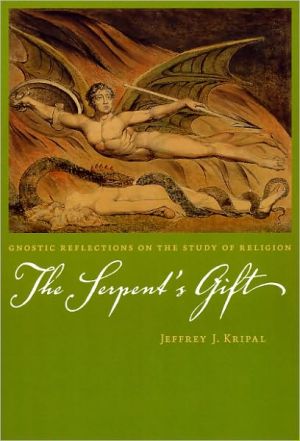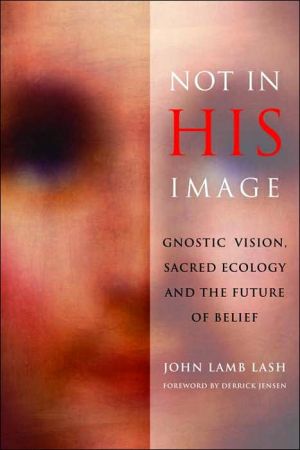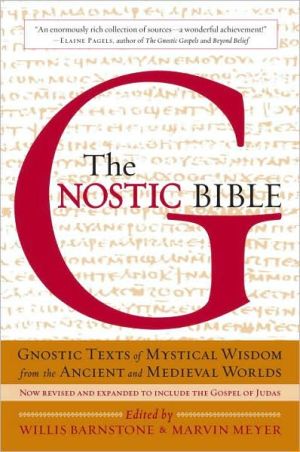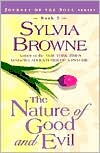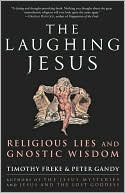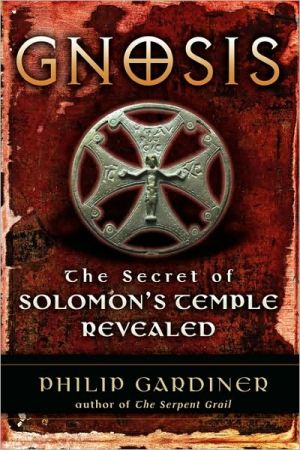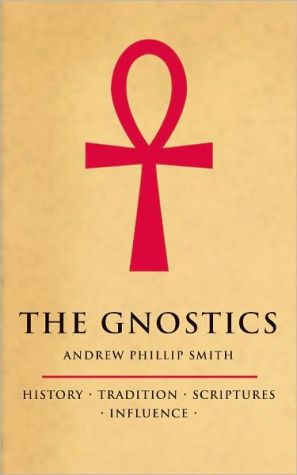The Serpent's Gift: Gnostic Reflections on the Study of Religion
“Because thou hast done this, thou art cursed above all cattle, and above every beast of the field.” With those words in Genesis, God condemns the serpent for tempting Adam and Eve, and the serpent has shouldered the blame ever since. But how would the study of religion change if we looked at the Fall from the snake’s point of view? Would he appear as a bringer of wisdom, more generous than the God who wishes to keep his creation ignorant? \ Inspired by the early Gnostics who took that...
Search in google:
As recent domestic and geopolitical events have become increasingly dominated by intolerant forms of religious thought and action, the critical study of religion continues to find itself largely ignored in the public square. Caught between those who assert that its principal purpose is to reflect the perspectives of those who believe and those who assert that its only proper place is to expose these same worldviews as deceptive social and economic mechanisms of power, the discipline has generally failed to find a truly audible voice. Rejecting both of these conservative and liberal modes of knowing as insufficient to the radical subject that is religion, Jeffrey J. Kripal offers in this book another possibility, that of the serpent’s gift. Such a gift hisses a form of gnosis, that is, a deeply critical approach to religion that is at the same time profoundly engaged with the altered states of consciousness and energy that are naively literalized by the proponents of faith and too quickly dismissed by the proponents of pure reason. Kripal does not simply describe such a gnosis. He performs and transmits it through four meditations on the sexualities of Jesus, the mystical humanism of Ludwig Feuerbach, the gnostic potentials of the comparative method, and the American mythologies of the comic book. From the erotics of the gospels to the mutant powers of the superhero, The Serpent’s Gift promises its readers both an intellectual exile from our present religious and sexual ignorance and a transfigured hope in the spiritual potentials of the human species. Harvard Divinity Bulletin "A fascinating meditation on gnosticism, sexuality, religious studies, and life in general. It will intrigue, challenge, provoke, and (possibly) alarm or offend the reader, but all for the sake of an important quest for a new way of thinking through and drawing together, our currently disparate studies of religion, mysticism, theology, and human and divine realities. . . . Each essay is well written and inviting, and most useful reading; cumulatively, they make the case that excluded, silenced, lost perspectives need to be heard in twenty-first century academe and also in our spiritual quests."— Francis X. Clooney
The Serpent's Gift GNOSTIC REFLECTIONS ON THE STUDY OF RELIGION \ By Jeffrey J. Kripal \ THE UNIVERSITY OF CHICAGO PRESS Copyright © 2007 Jeffrey J. Kripal\ All right reserved.\ ISBN: 978-0-226-45380-4 \ \ \ \ Chapter One The Apocryphon of the Beloved \ The Bible must be shaken upside down before it will yield all its secrets. The priests have censored and clipped and mangled: they give us a celibate Jesus born of a virgin without the slightest "stain" of sexual contact, which is blasphemous nonsense. William Blake (1757-1827)\ Not all men can receive this saying, but only those to whom it is given. Jesus on the eunuch saying in Matthew 19:11\ Invocation\ In gnostic literature, an apocryphon (literally, a "hiding away" or "concealing") is a secret teaching usually committed to a trusted disciple by Christ after his resurrection but before he ascends into heaven. It is, in other words, a hidden pedagogical moment of deep revelatory significance. The word is also related to what is often called the apocryphal literature, a class of ancient religious texts that did not always make it into the canons of the Jewish and Christian scriptures but that are nevertheless considered important for the development of both-a kind of "scriptural shadow," hovering between the two traditions. By calling my reflections here an apocryphon, I intend to evoke all of these meanings-hidden, secret, personal, revelatory, not quite "right" or "straight" (ortho-dox), maybe even a bit queer. I also offer what follows as a distinctly "mystical" text in the ancient hermeneutical sense of that adjective, that is, as a radical technique of interpretation that reflects the altered states of theory and reveals via the labor of human learning some of the deepest and most transformative meanings of the texts, meanings that often go directly against the assumed "obvious," commonsense, or literal readings that have more or less captured the conservative ideologies of contemporary Christianity.\ Let me be very clear, then: the goal of this apocryphon is not yet another "historical Jesus" who can ground a public faith or who meets all the requirements of historical reason. Other scholars, far more qualified than this one, have met that task for us. This is different. What I am after here resembles more a kind of historical koan (a nonsensical riddle Zen masters use to cognitively shock-or shut down-their students into sudden bursts of enlightenment), an intentionally paradoxical picture, a free act of imagination, an openly "heretical Jesus" who can provoke new thought, self-reflection, and revelation, not in the first- or second-century Mediterranean world, but here in America in us. In the end, what I am after is a kind of sexualized gnosis, an erotics of the Gospel that can meet and learn from, on a very deep transgressive level, the erotic mysticisms of other climes and times, particularly the Tantric traditions of South Asia, the Himalayas, and China. I hiss and write, then, through a specific Tantric imaginaire, but one that is in the background here, seldom making it onto the page, usually secreted in the endnotes, but nevertheless fundamentally, gnostically, informing how I think, read, and write. The Gospel read and revealed through the Tantra, if you will.\ But this is not just a (post)modern apocryphon. It is also an apocryphon of the Beloved. Most simply put, my topic here is love: love expressed and celebrated, love censored and allegorized away by the orthodox, love restored and healed through the serpent's gift of scholarship, love finally transmuted and gnostically realized as divine. And why not? Ideally speaking, Christianity is a religion of love. "God is love," John tells us in one of his famous brief letters preserved for us in the New Testament (1 John 4:16). But what kind of love? And, more to my present interests, how is this love related to human sexuality and, more specifically, to Jesus's sexuality? The Gospel of John speaks rather teasingly of "the beloved disciple whom Jesus loved" (ho mathetes hon egapa ho Iesous) (John 13:23, 19:26, 20:2, 20). But who was this Beloved; that is, what sort of person was the object of Jesus's most intimate and quite public love? The canonical gospels are not at all clear about this; indeed, the Gospel of John, although quite clear that Jesus had a lover, goes out of its way not to tell us the identity of the Beloved. This loud silence, as we shall see, is itself highly significant. Bisexual confusion, gender ambiguity, and erotic paradox are themselves a kind of answer to our riddle, to our own Apocryphon of the Beloved.\ The Quest for the Heretical Jesus\ Biblical critics have often made a distinction between the historical Jesus and the Christ of faith, perhaps a kind of modern secular echo of the ancient gnostic distinction between the true Godhead and the lesser creator-god or demiurge. I invoke this strategy again here, not to arrive at historical certainty about what Jesus did or did not do (or, even more speculatively, about what Jesus did or did not feel), but rather to posit a broad structural theory about the orientations-at once spiritual and sexual-of early (and contemporary) Christian memory and imagination. Through such a rhetorical strategy, I seek to isolate a series of tensions or paradoxes and, through them, transmit an erotic energy and effect a shift in consciousness.\ This erotic shift in consciousness, I would suggest, is already implicit, if seldom made fully conscious, in the collective work of the academy, which often functions very much like a contentious, riven, but truly knowing gnostic community. Seen in this imagined light, certain strands of New Testament scholarship can be read as constituting an esoteric vision of Jesus that departs so dramatically from that set of public or exoteric images that have come down to us in the conservative churches that we might be led to see the present Christian moral debates involving such topics as homosexuality, gay marriage, and "family values" as terribly cruel and deeply ironic charades that deserve both our wildest tears and our most mocking, knowing laughter. If ever there was a reason for the gnostically inclined, for those who prefer personal knowledge over official belief, to believe that the world is ruled by a stupid and sadistic archon or ruler, this is it, and if there were ever a case to be made for the radical, essentially heretical nature of religious studies, it is here. The quest for the historical Jesus is finally better named the quest for the heretical Jesus, not because history is false and heresy is true, but because writing history is always quite literally "heretical," that is, a deeply personal choice (hairesis) or series of choices that one makes out of one's own deepest convictions, disciplined study, and still-inarticulate intuitions, regardless of whether these conform to orthodoxy and religious authority. Often, of course, they do not.\ "One Will Know Them by Their Roots"\ William E. Phipps, who has done as much as anyone to explore the question at hand, has written that there is much confusion surrounding Jesus's sexuality "from the womb to the tomb." That is certainly correct, but it is also something of an understatement. We will address both the womb and the tomb in due time, but before we do, it is important to point out that the problem of Jesus's sexuality appears even earlier than the proverbial and literal womb, that is, in his alleged ancestors who lived hundreds of years before he was conceived.\ The Gospel of Matthew is the first book of the New Testament. The first chapter (Matt. 1:1-17) of this first book consists of Jesus's "family tree." This family tree contains four, and only four, women: Tamar, Rahab, Ruth, and Bathsheba. Provocatively, three of these foremothers possess marginal or anomalous sexual characteristics that would have been obvious to any educated first-century Jewish reader (and scholars are in broad agreement that Matthew was writing for a Jewish audience). The fourth woman's life, moreover, can be read in an equally provocative fashion with little effort.\ Tamar was the daughter-in-law of Judah, one of the early patriarchs of Genesis (Gen. 38:6-30). After her first husband, Er, was killed by God for some unspecified crime and her second husband, Onan (Er's younger brother), was killed by the same God for spilling his semen on the ground in a refusal to honor the Hebrew custom of producing an heir for one's elder dead brother, Tamar found herself denied the third brother in line by her father-in-law. Apparently, Judah was not about to lose a third precious son to this woman and the mysterious happenings that swirled around her. But Judah's bloodline was rightfully and legally Tamar's, Judah was wrong to deny it to her, and Tamar would not be frustrated. She thus resorted to a sexual ruse to acquire the seed that was hers by divine law. Dressed up as a prostitute at the front gate, she seduced the patriarch himself and became pregnant. Once she began to show, however, Judah, still unaware of whose seed she carried, demanded the extraordinary punishment of having her (and of course the unborn baby) burned alive, until he discovered that the seed in her womb was in fact his (that is, until he discovered that the child would not threaten the family inheritance). Tamar carried to term and had twin sons, a double boon in Hebrew culture and clearly a divine reward for her sexual courage and cleverness. Despite the fact that this remarkable story involves deception, prostitution, and incest, the author(s) of Genesis portrays Tamar as a heroine, as a clever, brave woman who kept the line of Judah going through a sexual ruse. Although never made explicit, the moral of the story for Matthew is clear enough: no incest, no line, no Jesus.\ As for Rahab, she didn't play the prostitute; she really was a prostitute. Rahab was the Canaanite prostitute who saved her family from certain death by helping the Hebrew army conquer Jericho by conspiring with the Hebrew spies (Josh. 2:1-21, 6:22-25).\ "The wife of Uriah" (the expression is probably intended to accentuate the scandal of David's sexual intercourse with her) was the beautiful Bathsheba, whose husband (Uriah) king David arranged to have killed in battle so that he could have her for himself. Actually, at the time of the murder, king David had already impregnated Bathseba, whose lovely naked body he had first seen while she bathed on a rooftop unsuspectingly before the horny royal voyeur (2 Sam. 11). What began as a lustful gaze thus led to sexual intercourse, pregnancy, and a premeditated murder, all of which again was quite necessary for this strange sexual line of Jesus the Christ.\ Ruth is the only one of the four who is not clearly involved in a sexual scandal. But Ruth was a Moabite, a foreigner, and for Deuteronomy 23:3, all descendants of Moabites are cut off "even to the tenth generation." This, as Theodore Jennings points out, would include king David, a third-generation descendent of the Moabite Ruth and the Hebrew Boaz. It is also possible, as Jennings points out again, that Matthew may have seen something (homo)sexual in Ruth's relationship to Naomi. Certainly many modern readers have. Then there was Ruth's sexually aggressive style. As William Countryman points out, "she initiated sexual relations with Boaz by uncovering his 'feet' (euphemism for genitals) at the harvest celebration, well before she could be understood properly to belong to him (Ruth 3)." Other scholars have seen here a "midnight striptease," a playful night of "under-cover and cover-over" operations, that is, a night of passionate sex, Hebrew "footsie" and all (which was way more than footsie).\ Now what is particularly important for our present purposes is that this sexually anomalous lineage is outlined in the very first chapter of the very first book of the New Testament. Thus, the moment a reader opens the page to this remarkable collection of documents, one is caught immediately in a series of sexual violations and serious moral questions, whether this is recognized or not (and, of course, it is usually not).\ Clearly, things are not at all what they seem. Without quite clearly saying so, the author of Matthew is trying his best to prepare his readers for what amounts to a long series of sexual transgressions, often outrageous violations of the Law, offensive, intentionally confusing parables, and some radical teachings about healing, love, and compassion. That is, he is readying his readers for the life and teachings of Jesus.\ From the Womb ...\ Nowhere is this general scandal more apparent than in the sexual nature of Jesus's conception and birth, that is, the "from the womb" of Phipps's apt expression. The traditional reading, of course, is that the conception of Jesus was "virginal," that is, without original sin and without sexual mediation (the doctrine implies, without quite stating it, that sin and sex are more or less the same thing). In other words, Mary was a virgin, even a perpetual virgin, if we are to believe the Catholic tradition and its exceptionally dubious reading of those New Testament passages that so clearly state that Jesus had siblings (e.g., Mark 6:3; Luke 8:19-21). But the texts, it turns out, are far more ambiguous and rich than this. For one thing, the story of Jesus's conception and birth, so seemingly well known through the Christmas conflation of Matthew and Luke (the two texts actually contradict each other on a number of important points) and any number of pious additions, is in fact only told in Matthew and Luke. Mark, the earliest gospel, and John, the latest, know absolutely nothing of a virginal conception or a Christmas story of any kind (nor, by the way, does Paul). The stories of Mark and John really begin with Jesus's baptism under John the Baptist, whose community was clearly in competition with that of Jesus; hence the jockeying for superiority we see in these stories-who baptizes whom and what each says to the other.\ Moreover, and most provocatively, Matthew at least is clear that Joseph was not Jesus's biological father (although his genealogy traces Jesus's lineage through Joseph's line, thus effectively separating legal and biological fatherhood). In Matthew, Joseph is about to divorce a very young and pregnant Mary (most commentators put her somewhere between thirteen and sixteen) and thus expose her to a very possible stoning when an angel appears to him in a dream and tells Joseph to keep both her and the child of her womb. Contrary to what is often believed, the famous angelic description of Jesus to Joseph (Matt. 1:20) as conceived "of a spirit that is holy" (ek pneumatos estin hagiou) or "by the Holy Spirit" signals a divine begetting that need not exclude the sexual participation of an actual human father, as some of the older Jewish traditions (such as the one claiming divine and human fatherhood for the Davidic King) also make clear. All that seems to be required by this phrase is that, whoever the actual father is, God also has a hand in this pregnancy-it is thus "of the Holy Spirit," that is, "divine." It is in this same context of biblical biological common sense that the Gospel of Philip will later ridicule the bizarre notion that Jesus had no human father.\ Matthew's angel come to speak of sex (and God's intimate role in it) appears differently again when he is properly placed within the erotics of the ancient Near Eastern religious imagination. Such an imaginaire is evident early in texts like Genesis 6:1-4, in which the horny "sons of God" seek out and have sex with the "daughters of men" in order to produce the nephilim, a hybrid race of divine-human beings. A much richer angelic erotics appears in the later gnostic texts, which developed a whole host of elaborate, gender-bending angelologies in which human sexual intercourse was understood to be guided and even actually shared by angelic presences, twins, and powers of various genders and natures. The mystical and the erotic fuse often in the figure of the ancient angel.\ (Continues...)\ \ \ \ Excerpted from The Serpent's Gift by Jeffrey J. Kripal Copyright © 2007 by Jeffrey J. Kripal. Excerpted by permission.\ All rights reserved. No part of this excerpt may be reproduced or reprinted without permission in writing from the publisher.\ Excerpts are provided by Dial-A-Book Inc. solely for the personal use of visitors to this web site.\
preface: Digging Up My Library acknowledgments introduction: The Serpent’s Gift Faith, Reason, and Gnosis The Premodern, the Modern, and the Postmodern Toward a Gnostic (Post)Modernity Medi(t)ations Writing as Hissing Autobiographical and Pedagogical Contexts The Essays 1 The Apocryphon of the Beloved Invocation The Quest for the Heretical Jesus “One Will Know Them by Their Roots” From the Womb . . . Sexual Healings: Dispelling the Demons of Abuse Sexual Teachings The Man Jesus Loved The Woman Jesus Loved The Secret 2 Restoring the Adam of Light The Adam of Light Awakened by Her The Fiery Brook The Sacrilegious Secret of Christian Theology Implications of the Method The Historical and Intellectual Contexts “Man Is God to Man”: The Virtues of Pluralism and Polytheism Completing the Incarnation of Love (and Sex): Embodiment in Feedback’s Thought The Sexuality of Numbers The Cancer and the Cure Toward a Mystical Humanism: A Gnostic Rereading 3 Comparative Mystics The Rebuke of the Gnostic and the Oriental Renaissance Comparative Mystics Ramakrishna: Colonialism, Universalism, Mysticism Doctrinal and Historical-Critical Analysis Ramakrishna and the Comparativist The Critical Study of Religion as a Modern Mystical Tradition The Scandal of Comparison Professional Heresy: The Gnostic Study of Religion interlude: Logoi Mystikoi; or, How to Think like a Gnostic 4 Mutant Marvels Educational and Sexual Allegory On Puberty and Powers Denying the Demiurge Toward a More Radical Empiricism Dissociation and the Release of Nonordinary Energies On Death as Dissociation Real X-Men On X-clusions and X-ceptions Political Allegory; or, How (Not) to Be an X-Man conclusion: Return to the Garden The Other Tree The Forbidden Fruit “When He Becomes Troubled, He Will Be Astonished” The Flaming Sword and the Bridal Chamber notes The Fruit of the Tree; or, My Gnostic Library before I Have to Bury It (Again) index
\ Library JournalFaith- and reason-based knowledge dominate American culture, while gnostic knowledge, i.e., knowledge derived from alternate states of consciousness, is overlooked and undervalued. Kripal (mysticism, Rice Univ.; Kali's Child) believes religious studies can play a special role in both the academy and society through its exploration of gnostic, mystical knowledge. He first explores the erotic, embodied nature of Jesus's sexuality, then examines the mystical-religious elements of Ludwig Feuerbach's atheist philosophy of religion. His third essay explores colonial influences on Indian mystic philosopher Ramakrishna's teaching on the universality of all religions. Finally, Kripal compares religious studies scholars to a counterculture of "X-men"-like mutants who bring to society a message about the legitimacy of nonrational ways of knowing. Kripal persuades more by illustration and suggestion than by deductive argument. Nonetheless, his writing glows with insight and enriches our understanding of humanity's gnostic dignity. Highly recommended.-Steve Young, McHenry Cty. Coll., Crystal Lake, IL Copyright 2007 Reed Business Information.\ \ \ \ \ History of Religions[Kripal's] trademark mix of autobiography and rigorous scholarship gives his writings a style all their own. His irenic style matches his approach: he reaches out to all sides rather than setting one side against another. . . . In any future course on the study of religions, I would assign The Serpent's Gift.\ — Robert A. Segal\ \ \ \ Jeremy Zwelling“In The Serpent’s Gift, Jeffrey Kripal provocatively advances a practice he names ‘academic gnosticism.’ Through such a method, he seeks to move beyond some of the obstinate binaries that have preoccupied, and sometimes thwarted, scholars of religion. This lively, accessible, and delightfully transgressive book also explores how the academic study of religion itself is implicated in, indeed emerges out of, some of the heretical subject matters it tries objectively to understand. In making conscious a culturally repressed, religious unconscious by means of his ‘mystical humanism,’ Kripal has once again succeeded in getting students of religion to think about (and with) old things in new and daring ways.”--Jeremy Zwelling, Wesleyan University\ \ \ \ \ Mark D. Jordan“A trickster-guide, Jeffrey Kripal lures his readers through mirrored doors and ironic tunnels into the inner chambers of the study of religion. There he conducts a disconcerting initiation. The mysteries of his religious studies are an antidote to the imperial certainty, the bombastic piety, of too much religion. This shimmering serpent gives with its fangs.”--Mark D. Jordan, Asa Griggs Candler Professor, Emory University\ \ \ \ \ \ \ Harvard Divinity Bulletin"A fascinating meditation on gnosticism, sexuality, religious studies, and life in general. It will intrigue, challenge, provoke, and (possibly) alarm or offend the reader, but all for the sake of an important quest for a new way of thinking through and drawing together, our currently disparate studies of religion, mysticism, theology, and human and divine realities. . . . Each essay is well written and inviting, and most useful reading; cumulatively, they make the case that excluded, silenced, lost perspectives need to be heard in twenty-first century academe and also in our spiritual quests."\ \ \ \ \ History of Religions"[Kripal's] trademark mix of autobiography and rigorous scholarship gives his writings a style all their own. His irenic style matches his approach: he reaches out to all sides rather than setting one side against another. . . . In any future course on the study of religions, I would assign The Serpent's Gift."\ \ \ \ \ Harvard Divinity BulletinA fascinating meditation on gnosticism, sexuality, religious studies, and life in general. It will intrigue, challenge, provoke, and (possibly) alarm or offend the reader, but all for the sake of an important quest for a new way of thinking through and drawing together, our currently disparate studies of religion, mysticism, theology, and human and divine realities. . . . Each essay is well written and inviting, and most useful reading; cumulatively, they make the case that excluded, silenced, lost perspectives need to be heard in twenty-first century academe and also in our spiritual quests.\ — Francis X. Clooney\ \ \
